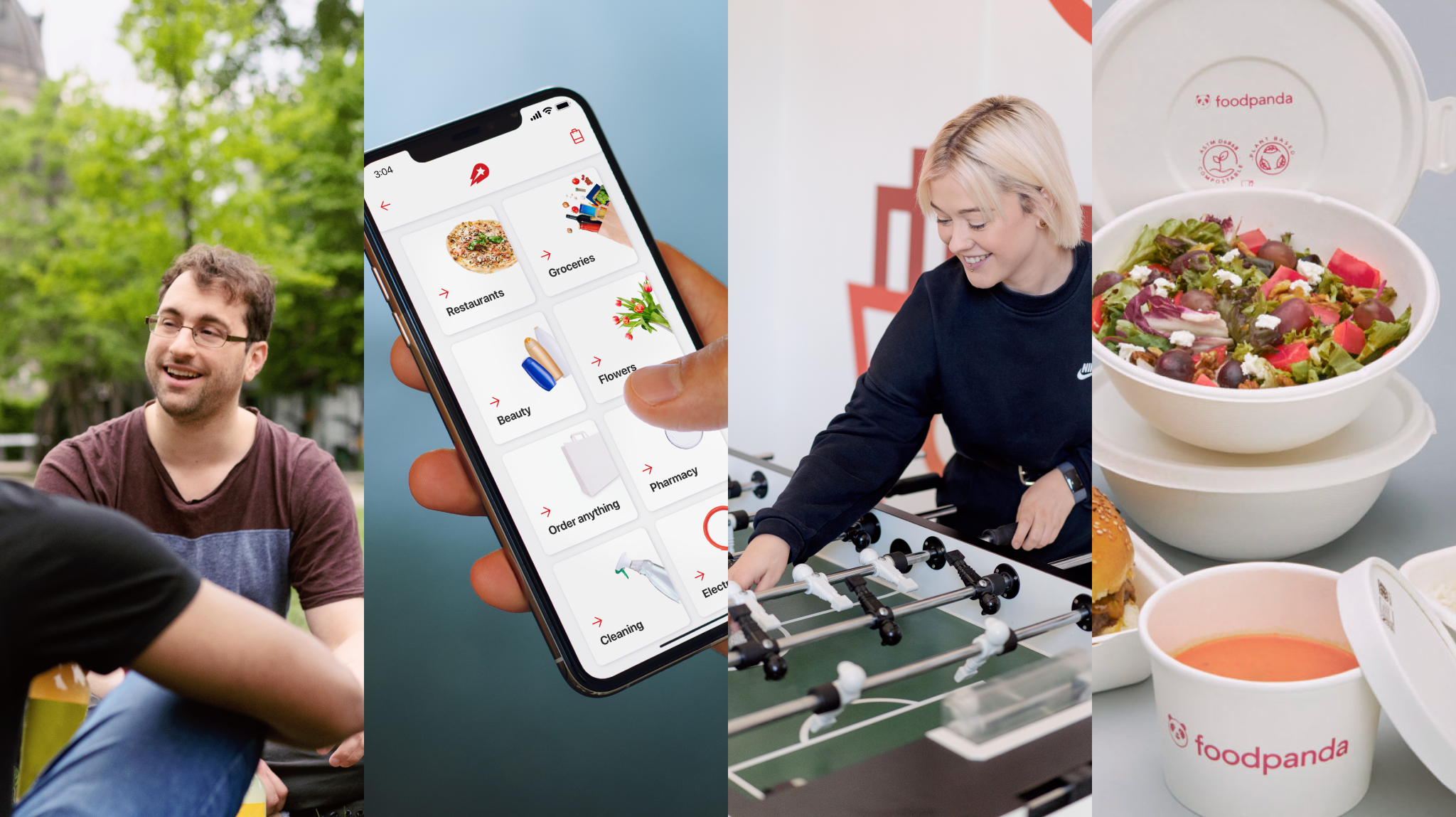Business & Innovation
- June 23, 2022AdTech: Helping customers find new food they love, every single day
From billboards and magazine spreads to sponsored searches and Insta shops, advertising has progressed rapidly over the last ten years. Now, the term “AdTech” (Advertising Technology) is widely used to cover all tech that has been developed to support advertising campaigns.
At Delivery Hero, we are exploring the potential of AdTech to introduce people to new food they love and to enable our partners to meet their future customers at the perfect moment. Operating across about 50 countries around the clock, our AdTech connects the ideal advertiser with the ideal customer millions of times every day. In 2024/25, AdTech is predicted to generate more than 2 billion euros in revenue for Delivery Hero*, and our innovative tech and product offering is the backbone of that development.
We talked to three people working in AdTech at Delivery Hero, to get their take on the why and the how of all things advertising at Delivery Hero. Read on to hear Candas Bozkurt (VP Global Revenue), Tara Carroll (Director of Media Solutions, Quick Commerce) and James Carter (SVP Engineering) discuss this exciting pillar of our business model
What does “AdTech” mean at Delivery Hero?
Candas Bozkurt: “There are two forms of AdTech at Delivery Hero. The first is a range of products that we have developed to offer advertising solutions for restaurants, which help them to increase their visibility and reach, improve their order conversion, and eventually drive more sales. The second is led by Tara, and helps fast-moving consumer goods (FMCG) brands to build brand awareness and drive sales.”
Tara Carroll: “AdTech helps advertisers to find and meet our customers in-platform. In practice, this means that our products process a huge amount of data to get to know our customers, figure out what they like and what they might like but haven’t yet tried. Using this data, we match advertisers to the customers that are most likely to be interested in their product. We have to make the right decisions so that the experience is personalized. Tech is an enabler for this – we empower advertisers with the tools they need to run their campaigns and understand the results, so they can build better campaigns and we can get better at making customers happy.”
James Carter: “When someone opens the app and searches for pizza, there might be 100 options. If you’re a local independent restaurant, how do you make sure you’re not being overlooked when a user makes their selection? By investing in an advertising campaign on our platform, restaurants can put themselves in front of potential customers at the time that they are planning on ordering a meal. AdTech is a means for restaurants to get more visibility, and for customers to see the best options at the best time for them.”
Can you give a brief summary of the AdTech offering your team is working on?
Candas: “I like to think about AdTech in terms of the three-part marketing funnel: it’s split into awareness, consideration and conversion. Up until now in the Restaurant vertical, we have covered the middle of the funnel with our cost-per-click (“CPC”) products, and the bottom of the funnel with a product we developed called Joker. Restaurants can use Joker to provide targeted offers to customers in the form of a discount if they order from them within a certain number of minutes, making sure they get the best deal at that moment. Now, we are adding display ads to our product portfolio in order to cover the awareness section of the funnel. This ensures restaurants can be seen by customers from the first day that they open with tools like banners, video ads and so on.”
Tara: “For quick commerce, we recently partnered with CitrusAd (a tech platform for media solutions, built and designed by retail experts) to offer an end-to-end media tool, so that our partners can set up an advertising campaign, track its impact, and tweak it in real-time. Effectively we will be offering the same awareness and cost-per-click products as the restaurant vertical. Partners can choose how they want to pay, so they have much more control over how they are bidding and can see a real return on their ad spend.”
AdTech seems to have grown in significance a lot over the past few years. Can you explain why it’s such a focus at Delivery Hero?
James: “Restaurants were really demanding functionality during the pandemic. They needed tools to reach new customers, and so we focused on providing the best possible experience for them. Seeing how valuable it was, we are aiming to become the best-in-class provider of advertisement tools for restaurants and partners as our business expands.”
Candas: “Advertising was the most effective means for restaurants to increase their reach during lockdowns. As our offering developed to support this, we realized that it’s a really strong step on the path to profitability. Digital advertising has high-profit margins, and this will enable us to continue growing Delivery Hero’s business sustainably in the long term.”
Tara: “We’re an on-demand service, which means that advertisers can meet customers in the moment that they’re actually building their basket. Traditionally, advertising presented products to customers while they were going about their day, on billboards and in magazines, so this is a really positive development for partners. Effectively, customers are already ready to buy when they go onto the app, so we’re just helping them find new products. We also have very engaged customers, and we have spent a lot of time learning about their wants and needs. This puts us in a good position as an AdTech partner.”
How does innovation in AdTech help to push the business forward?
James: “A good example of innovation is with personalization. There are so many different types of customers on the platform, and we want to make sure every customer sees what they want, and every restaurant can make the best use of advertisements. We use machine learning to rank restaurants and provide the most relevant results for each individual customer. We also work at a huge scale, across a lot of very different markets and different platforms.”
A good example of innovation is with personalization. There are so many different types of customers on the platform, and we want to make sure every customer sees what they want.
James Carter, SVP Engineering at Delivery Hero
Tara: “AdTech is constantly evolving. Recently, cookies slowly disappearing has meant that advertisers can’t rely on collecting data on third-party websites to reach users. Now, first-party data, which looks at customer behavior as they interact with our app, is the key to personalization. In this particular area, Delivery Hero has been innovating for a long time. In the world of retail, AdTech is actually innovating the industry, and not the other way round.”
Candas: “Advertising products are effectively performance products. For everything we do, we run A/B tests and leverage tech and machine learning to constantly optimize the offering. One area we invested heavily in the last year was self-service capabilities. At the beginning of our AdTech journey, restaurants were able to book ads through sales agents only. More demand pushed us to build self-service capabilities that have enabled tens of thousands of restaurants to manage their advertising campaigns and access real-time reporting. ”
Does that change the way you build products?
James: “It changes a lot. What works for restaurants in one region on one platform might not work for users elsewhere. Data and machine learning allows us to take advantage of this, rather than seeing it as a barrier.”
Candas: “We tend to build AdTech solutions globally, within Delivery Hero’s core tech team, and then local markets own the end-user experience. We give a lot of autonomy to local markets to experiment and improve the products. Empowering markets really drives innovation: Delivery Hero can learn from the teams that have direct contact with restaurants and customers, and then turn those insights into central features that benefit all of the other markets.”
*Primarily advertising revenues and other non-commission revenue (excluding Woowa until Q1 2022)





Share